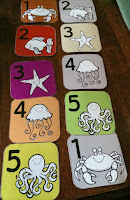Follow my blog with Bloglovin REPETITION, CHAOS, AND ORGANIZATION!! I cannot stand having to do things repeatedly especially if I can design a way to make it work better for me. I spend A LOT of time in the classroom making and remaking schedules. It was needed for sure! Changing schedules for changing needs of students, Redoing schedules and choice boards because I put the wrong item on the schedule even after double checking.
RE-DOING the schedules AGAIN!
NOT HAVING THE BEST SCHEDULE FOR A STUDENT - CHAOS!
GET IT STREAMLINED and YOU GET BETTER ORGANIZATION!
I LOVE organization but I do have difficulty maintaining it. But this idea seemed to work for me.
So, if it works better for me - I want to share it with you because just maybe, it will help one of YOU also. Take a look!
A few weeks back I shared with you about a new product coming out. The plan didn't exactly happen as I had planned.
Of course life happens, Thanksgiving came and went and other product ideas got in my head, but finally I do have it up in the store.
This is something I have used in different ways in my classroom but never put it all together.
In my classes, I served a variety of skill levels, ages, grade levels and disabilities ranging from moderately to significant. One thing they all had in common over the years was that they could all learn independence in the classroom at some level and in some capacity.
Of course as we worked on increasing independence, more and more students worked on their own schedules. Each child worked with whatever type of schedule worked best for them. I truly operate on an individual basis in my classroom. Some children worked with picture schedules, some with pictures and text and some with just text and occasionally I have that student that can work independently.
Some students carried their own schedule with them, some are mounted on the board, some in notebooks or clipboards. Some are fastened on desks and tables and some were managed by the adults in the classroom.
Many of the children also have choice boards as well. Some are incorporated into the schedules and others are separate from them. The choice boards give them the options they can choose once their work is complete. This may be an IF/THEN board or a token board or it could just be a board of fun, relaxing or preferred items they can pick from once their work is completed.
With all these schedules and choice boards in the room it can get pretty confusing at times and I wanted a way to keep all the schedules and choice boards in an organized manner so that all adults in the room could access them quickly.
So I came up with a schedule/choice board flip book that is bound with a binding coil. It has removable visual cards so options can be changed quickly without hassle and all the pages can be together in one place for multiple students.
I made multiple copies of the boards for me and also for my paraprofessionals. This way everyone had a copy at their fingertips.
As we all know- schedules and choice boards rarely stay the same for long, so I wanted something that could be modified quickly and easily. Here is what I came up with.
The book is tabbed so you can easily flip to the specific student you want, The visuals are fastened with hook and loop fasteners so they can be exchanged quickly when needed.
This is an editable product. The 6 tabbed pages can have student names typed in prior to assembly. A prepared title page is available as well as an editable one so you can personalize it. You can type on the tab, use a marker or just add names with label tape.
Above is a picture of some of the 144 visuals I created to go with the first version of the product. There are multiple choice items, school activity cards, and subjects. Some of the items have multiple cards showing variations of the topic such as 1 card showing a swing set with children on it and one card shows an empty swing set. Some of the other variations include activities showing girls or boys doing activities and others show photos of items while others are clipart pictures of the same item.
I would like to hear from you. Pick this item up in my store before the price increases.
Send me suggestions as to what additional visuals and choices you need to make it work for you. All schools and situations have different activities and or subject names for things. Let me know what YOU need for your tabbed book. As soon I have accumulated additional visual card ideas, I will update the product with your suggestions. You will then be able to download them and any other I add FREE of charge.
You can find this item in my store http://bit.ly/flpbk562 .
Being organized and streamlining everything you can in a special education classroom helps make the entire day run smoothly.
Take it easy and everyone have a great week! The holidays are almost here!


















































